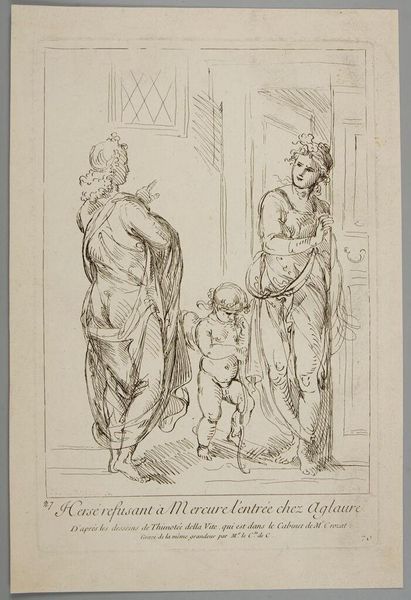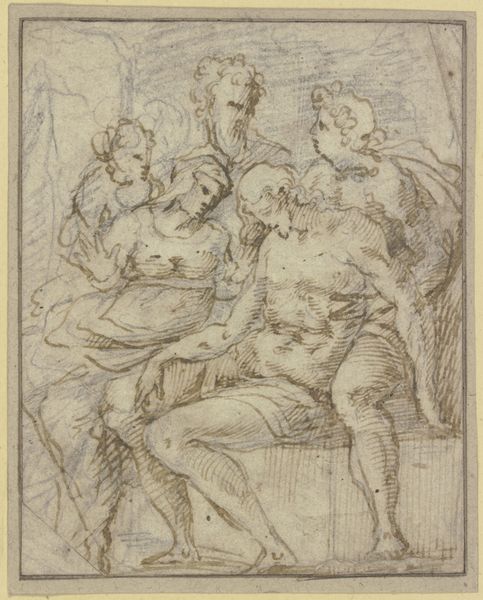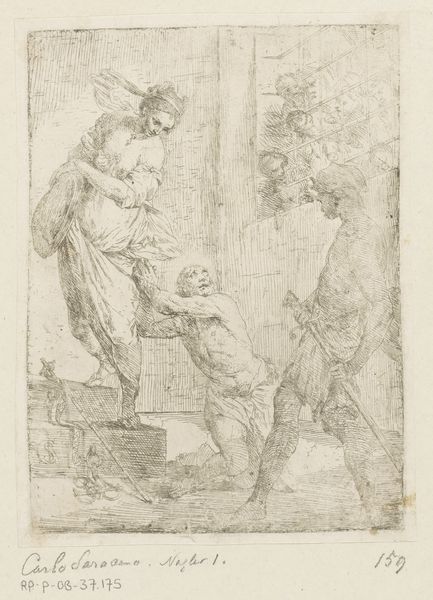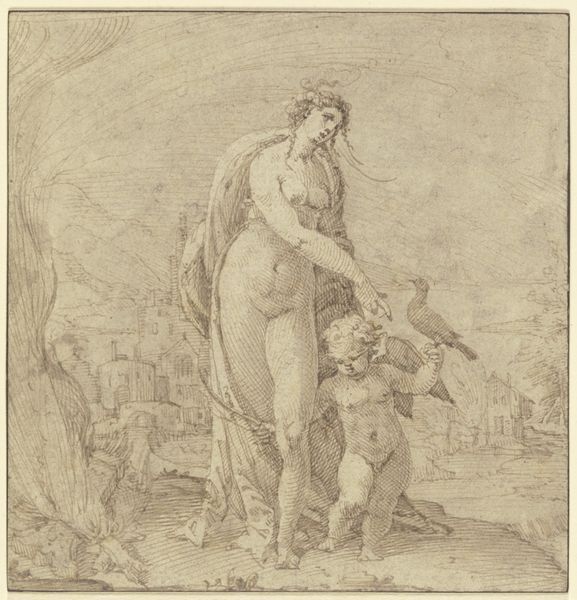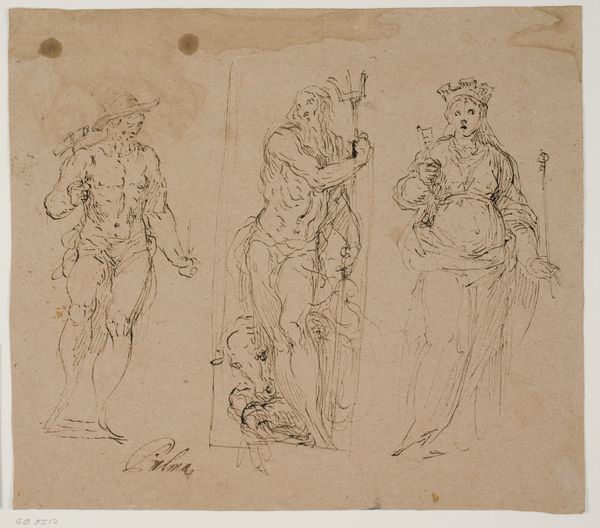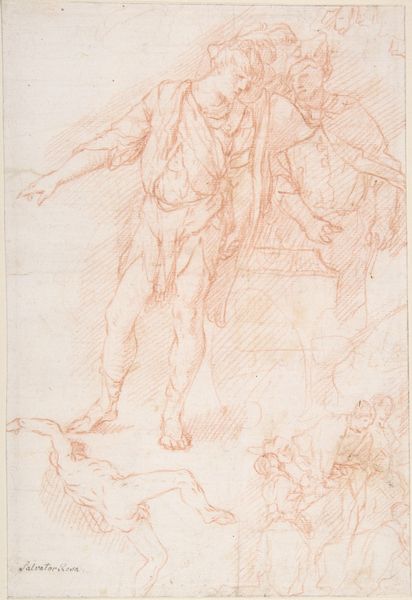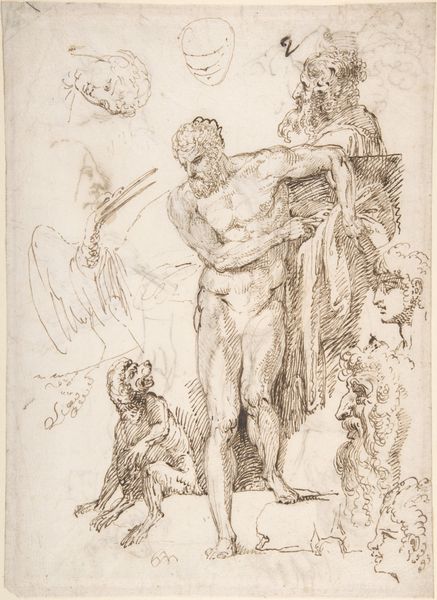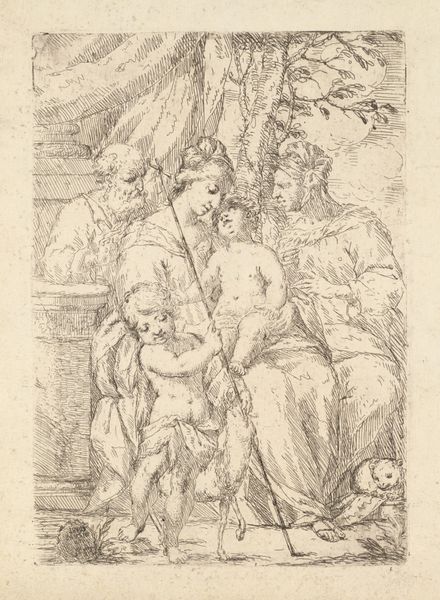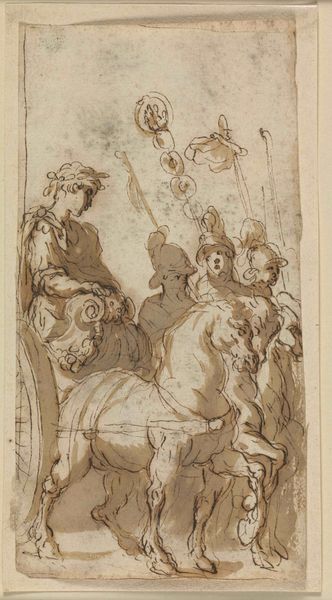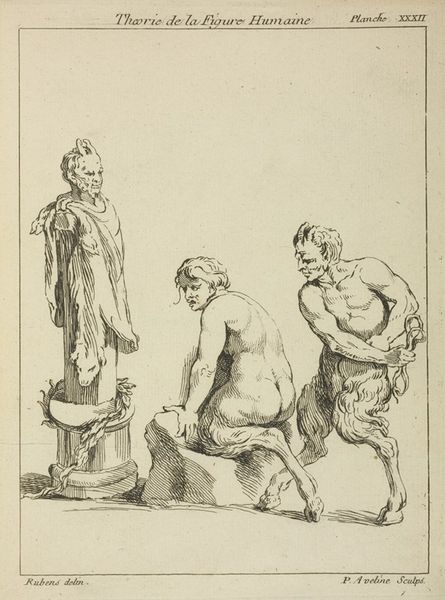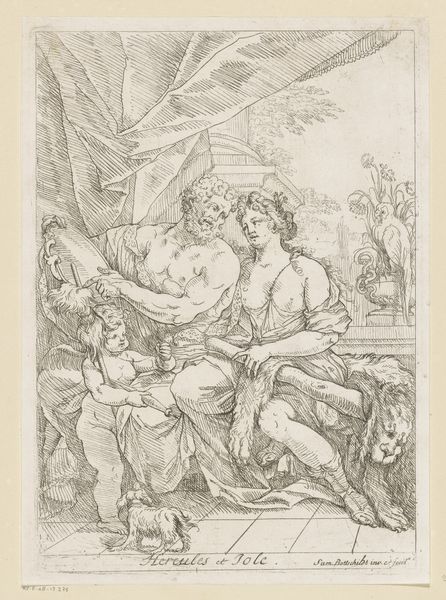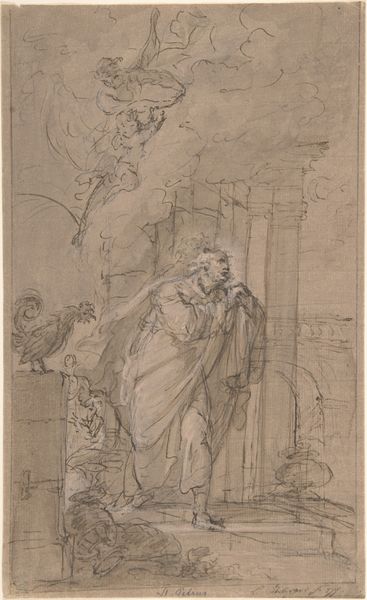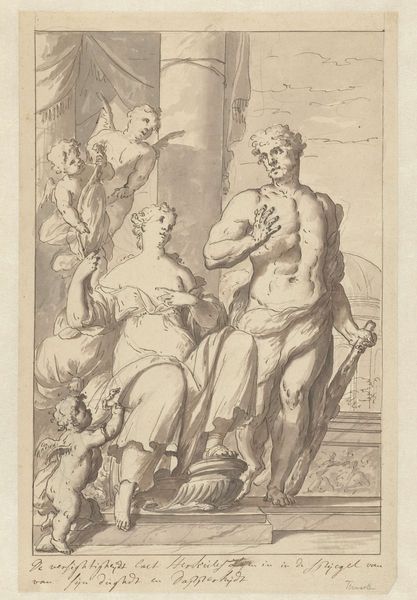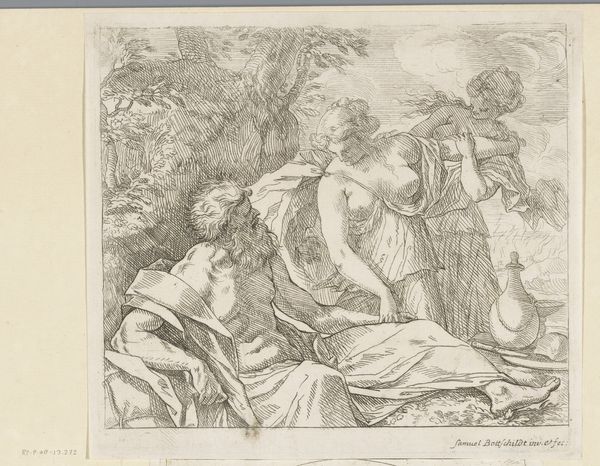
Aglauros preventing Mercury to enter Herse's room, with Cupid at center 1724 - 1734
0:00
0:00
drawing, print, pencil, engraving
#
drawing
#
baroque
# print
#
pencil sketch
#
figuration
#
pencil
#
line
#
history-painting
#
engraving
Dimensions: Plate: 13 3/4 × 9 1/8 in. (35 × 23.2 cm) Sheet: 20 7/8 × 15 1/4 in. (53 × 38.8 cm)
Copyright: Public Domain
Curator: Looking at this piece, I am immediately struck by its ethereal quality, a fleeting moment captured with delicate lines. Editor: Indeed. This engraving, dating back to the 1724-1734 period, is titled "Aglauros preventing Mercury to enter Herse's room, with Cupid at center" and it's attributed to Anne Claude Philippe Caylus. Currently, it resides here at the Metropolitan Museum of Art. Curator: The subject matter clearly depicts a mythological scene. Notice the figure of Aglauros blocking Mercury's path. To me, the hand gestures alone—Aglauros' pointed finger, Cupid fiddling with his arrow—create an emotional narrative around obstruction, denial, and the subtle machinations of love. Editor: Yes, the composition invites inquiry into the tale. According to Ovid, Aglauros was punished for her greed and envy, eternally blocking Mercury’s path. How interesting that Caylus highlights the agency of Aglauros in hindering divine intervention. Curator: Absolutely! Mercury’s intentions are clear. Note Cupid’s position; his downward gaze, usually symbolizing love’s arrow at the ready, suggests perhaps an understanding that his efforts here are stalled. Is this a critique, do you think, of societal expectations and gender roles within a mythological context? Editor: It could certainly be interpreted that way. Caylus may subtly reflect on the limitations imposed upon women and how such limitations influenced their socio-political actions at the time. This moment illustrates individual defiance, however destructive or ill-fated. The fact it’s rendered in this particular style—pencil sketch translated to engraving—might reflect something about the print market and the accessibility of classical narratives for contemporary audiences. Curator: Thinking about it from an iconographic point of view, each of the figures—Cupid, Mercury, Aglauros—carried specific baggage of meaning. And their collision generates such a dense field of tension within a space…! Editor: Ultimately, that push-and-pull captures your attention even centuries later. It's so striking how an artwork can become a silent echo chamber of unresolved conflicts across generations, isn’t it?
Comments
No comments
Be the first to comment and join the conversation on the ultimate creative platform.
